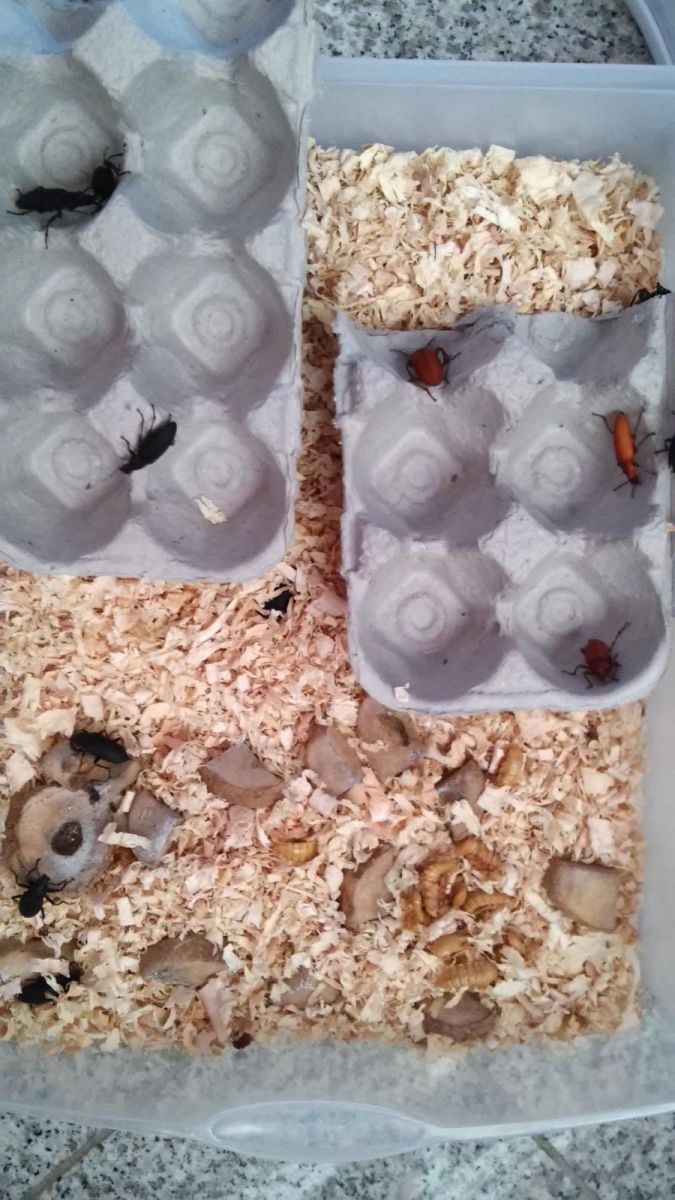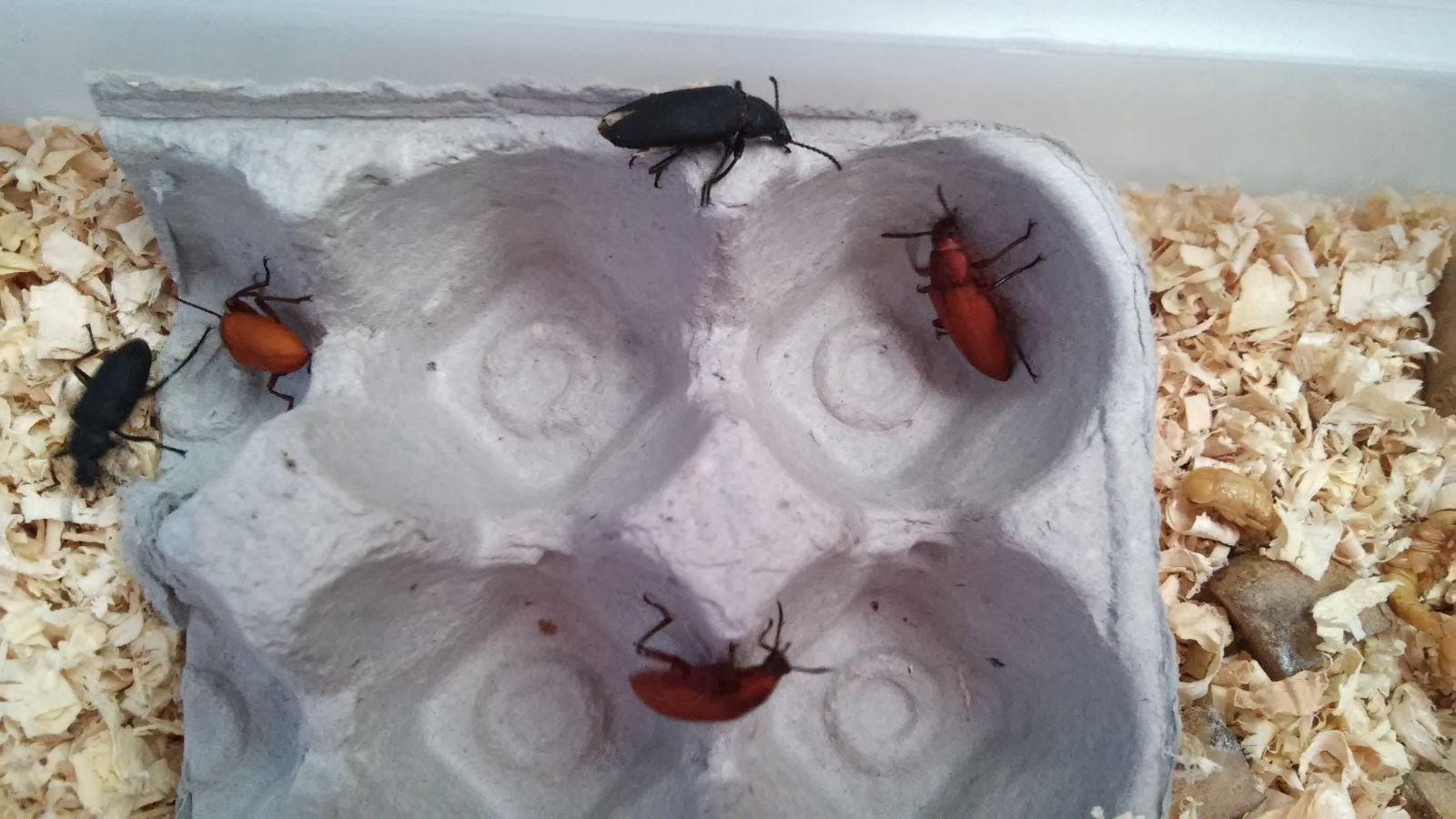MEALWORMS:
Have them setup in some kind of container (start off small)
Make sure you have them with a water source at all times, so if your apple, potatoe, celery, or whatever you using make sure if it dries to replace it!
After a little while (depending on what size of mealworms you bought) they will start to pupate, I've had a problem where the pupa will almost never survive which the cause for that is as it was a mealworm it did not eat anough moisture (carrots,ect.)
After they turn into a beetle, which you can use some kind of heat source to make it go faster, you put them into another container and after a bit they will lay eggs (you should know what happens next!!)
Repeat
MATERIALS:
(bedding) Oats, Bran, Dried Cerial (preferable crushed and no flavoring), some other sort of grains
(water source) Celery is what I use but you can use potatoes, carrots, lettuce, apples, I've even heard grapes!
(containers) some kind of rubbermaid container or drawers, or just an aquarium or something plastic
SUPERWORMS
There the samething only to pupate them you have to keep them individually because they don't pupate in a colony for some reason





















